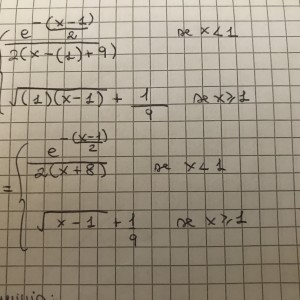Studying the graph of this function
I need to study the graph of this function, especially the asintotes (limits) and derivatives.
 Michela
Michela
19
Answer
Answers can only be viewed under the following conditions:
- The questioner was satisfied with and accepted the answer, or
- The answer was evaluated as being 100% correct by the judge.
1 Attachment
4.8K
-
Thank you! So basically x=-8 is the only asymptote ( and y=0 for the first function)? Can I also ask you how to calculate the second derivative? I can't find the concavity of the function because the second derivative is too difficult
-
x=-8 (vertical)and y=0 (horizontal) are the asymptotes. Note that lim f(x)=0 as x goes to + infinity.
-
Yes, the second derivative would be challenging. You can ask that question in a separate post.
The answer is accepted.
Join Matchmaticians Affiliate Marketing
Program to earn up to a 50% commission on every question that your affiliated users ask or answer.
- answered
- 1681 views
- $3.94
Related Questions
- Evaluate the integral $\int_{-\infty}^{+\infty}e^{-x^2}dx$
- continuous function
- Equation of the line tangent to a circle
- Help formulating sine function
- Vector-valued functions and Jacobian matrix
- Functions + mean value theorem
- Compute the curl of $F=(x^2-\sin (xy), z-cox(y), e^{xy} )$
- Solve only for the multiple choice part, the answer for the first box is 0


You forgot to upload the file.
thank you! I've just added it